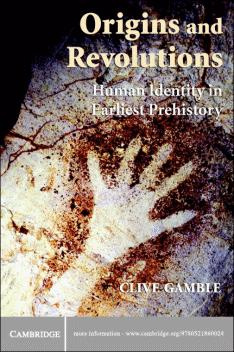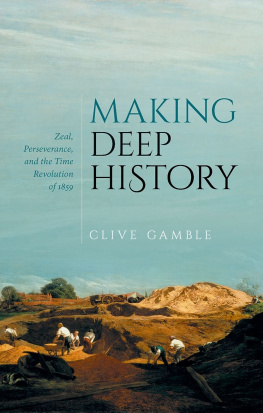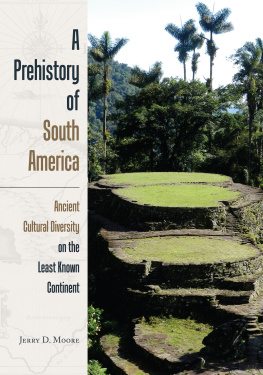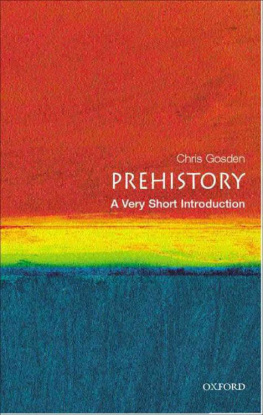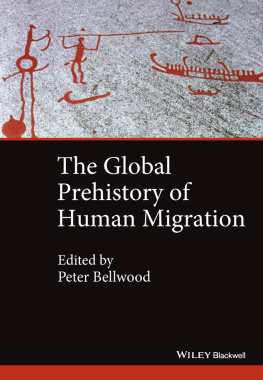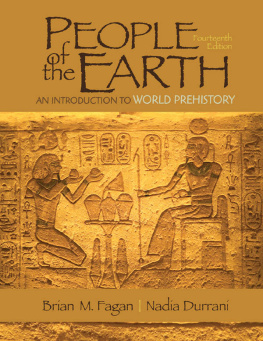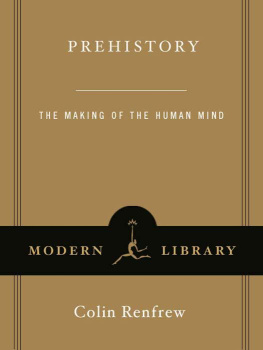What changed in the three million years of human evolution? Were there tipping points that made us more recognisably human? In this innovative study, Clive Gamble presents and questions two of the most famous descriptions of change in prehistory. The first is the human revolution when evidence for art, music, religion and language appears. The second is the economic and social revolution of the Neolithic. Gamble identifies the historical agendas behind research on origins. He proposes an alternative approach that relates the study of change to the material basis of human identity. Rather than revolutionary stages, Gamble makes the case that our earliest prehistory is a story of mutual relationships between people and their technology. These developing relationships resulted in distinctive identities for our earliest ancestors and continue today.
Gamble challenges the hold that revolutions and points of origin exert over the imagination of archaeologists. He opens the door to an inclusive study of how human identity, in concert with material culture, has developed over the past three million years.
CLIVE GAMBLE is Professor in the Department of Geography at Royal Holloway University of London. He is one of the world's leading authorities on the archaeology of the earliest human societies. His many groundbreaking books include The Palaeolithic Settlement of Europe; Timewalkers: The Prehistory of Global Colonisation; the 2000 winner of the Society of American Archaeology Book Award, The Palaeolithic Societies of Europe; and most recently The Hominid Individual in Context , edited with Martin Porr. In 2005, he was awarded the Rivers Memorial Medal by the Royal Anthropological Institute in recognition of his outstanding contribution to the field. He was elected a Fellow of the British Academy in 2000 and in 2003 became co-director of the Academy's prestigious Centenary Project, From Lucy to Language: The Archaeology of the Social Brain that seeks to find out when hominid brains became human minds.
CAMBRIDGE UNIVERSITY PRESS
Cambridge, New York, Melbourne, Madrid, Cape Town, Singapore, So Paulo
Cambridge University Press
32 Avenue of the Americas, New York, NY 100132473, USA
Published in the United States of America by Cambridge University Press, New York
www.cambridge.org
Information on this title: www.cambridge.org/9780521860024
Clive Gamble 2007
This publication is in copyright. Subject to statutory exception and to the provisions of
relevant collective licensing agreements, no reproduction of any part may take place
without the written permission of Cambridge University Press.
First published in print format 2007
ISBN-13 978-0-511-33889-2 mobipocket
ISBN-10 0-511-33889-9 mobipocket
ISBN 978 0 521 86002 4 hardback
ISBN 978 0 521 67749 3 paperback
Cambridge University Press has no responsibility for the persistence or accuracy of URL s for external or third-party Internet Web sites referred to in this book, and does not guarantee that any content on such Web site is, or will remain, accurate or appropriate.
Figures and tables list |
Figures |
| 1.1 |
| 2.1 |
| 2.2 |
| 3.1 |
| 3.2 |
| 3.3 |
| 3.4 |
| 4.1 |
| 4.2 |
| 4.3 |
| 4.4 |
| 4.5 |
| 4.6 |
| 5.1 |
| 6.1 |
| 6.2 |
| 6.3 |
| 7.1 |
| 7.2 |
| 7.3 |
| 7.4 |
| 7.5 |
| 7.6 |
| 7.7 |
| 7.8 |
| 8.1 |
| 8.2 |
| 8.3 |
| 8.4 |
| 8.5 |
| 8.6 |
| 8.7 |
| 8.8 |
| 8.9 |
| 8.10 |
| 8.11 |
| 8.12 |
| 8.13 |
| 8.14 |
| 9.1 |
Tables |
| 1.1 |
| 1.2 |
| 2.1 |
| 2.2 |
| 2.3 |
| 2.4 |
| 2.5 |
| 3.1 |
| 3.2 |
| 3.3 |
| 3.4 |
| 4.1 |
| 4.2 |
| 4.3 |
| 4.4 |
| 5.1 |
| 5.2 |
| 5.3 |
| 5.4 |
| 5.5 |
| 6.1 |
| 6.2 |
| 6.3 |
| 6.4 |
| 6.5 |
| 6.6 |
| 6.7 |
| 7.1 |
| 7.2 |
| 7.3 |
| 7.4 |
| 7.5 |
| 7.6 |
| 7.7 |
| 7.8 |
| 7.9 |
| 7.10 |
| 8.1 |
| 8.2 |
| 8.3 |
| 8.4 |
| 8.5 |
| 8.6 |
| 8.7 |
| 8.8 |
| 8.9 |
Acknowledgements
It is a great pleasure to be able to record my thanks to the many people and institutions that have contributed towards this book. The award of a British Academy Research Readership was essential to enable both travel and reading and the time to rethink the questions of why agriculture happened and the appearance of people like ourselves. As important was the opportunity provided by Dr Julie Hansen, who invited me for a semester as a Visiting Professor to research and teach at the Department of Archaeology, Boston University, funded by a Humanities Foundation Fellowship. My seminar class at Boston were among the first to hear the ideas in this book and set me right on a number of points; Ben Vining, Susan Mentzer, Satoru Murata, Menaka Rodriguez, Rita Pelosi and Sophie Telgezter. I should also like to thank Curtis Runnells, Priscilla Murray and David Stone for all their hospitality and good conversation. Across the Charles River a special debt goes to the staff of the Tozzer library and to Ofer Bar-Yosef at the Peabody Museum, Harvard: his encouragement is infectious and his generosity with data and ideas helped this project immensely. Unexpected travel opportunities came through C5 and the filming of a documentary series Where do we come from? broadcast in 2002. The production team of Michael Proudfoot, Jessica Whitehead, Jim Sayer and James Routh made light of remote destinations and in six months I saw more than I could have bargained for. I was also able to meet with many friends and make new ones both off and on camera. To all of them, thank you for your patience and your knowledge.
During the writing of the book I have moved from an Archaeology to a Geography Department. At Southampton, I would like to thank many of the staff and students who have helped me in working out the arguments of this book. From the Centre for the Archaeology of Human Origins: John McNabb, James Steele, Martin Porr, Annabel Field, Jenni Chambers, Anne Best, Fiona Coward, Rob Hosfield, Fotini Kofidou, Dmitra Papagianni, Vicky Elefanti, Gil Marshall, Matt Pope, Phil Kiberd, Farina Sternke, William Davies, Erica Gittins, Sonia Zakrewski and Yvonne Marshall. From the Department of Archaeology: Elaine Morris, Andy Jones, Yannis Hamilakis and Jo Sofaer. At Royal Holloway special thanks are due to Felix Driver, Rob Kemp, David Wiles, Matt Grove, Dora Moutsiou, Rob Imrie, Rebecca Sheldon, Scott Elias, John Lowe, Karen Till, Jim Rose, Danielle Schreve, Nick Branch and many Landscape Surgeons.

